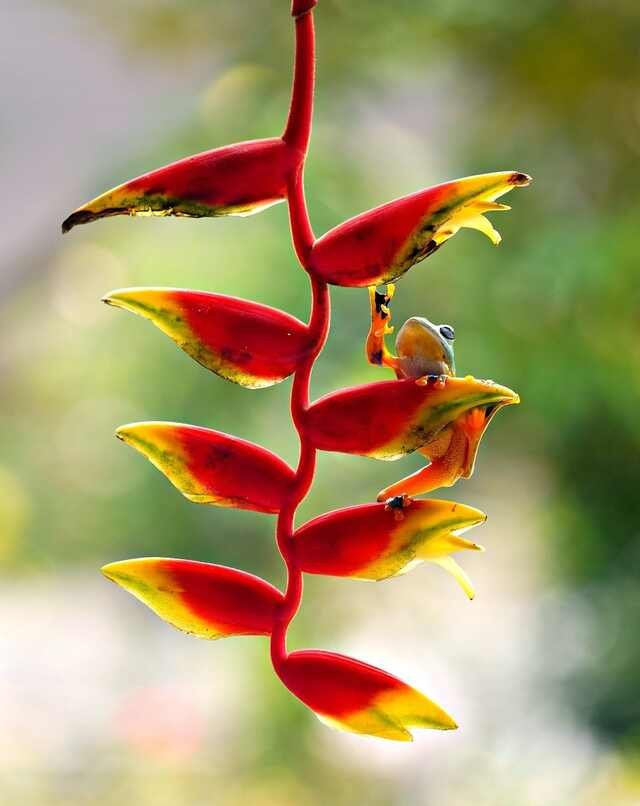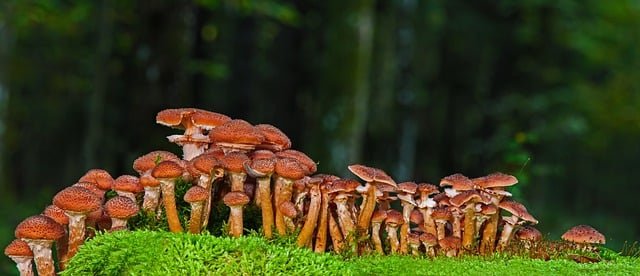Shrubs are the backbone of any garden, but we’ve rather forgotten about them over the last few years because, of course, we’ve all fallen in love with the perennials that have beautiful flowers, and obviously they’re so wildlife-friendly. But actually, perennials compared to shrubs are quite a lot of work. So, if you want a low-maintenance garden that’s also got beautiful flowers, is wildlife-friendly, and has something to look at in the winter, then really it’s time to look at the structure of shrubs again. A shrub is a woody plant whose structure stays above the ground all year round. It’s usually not as big as a tree, and it may lose its leaves in winter, in which case it’s called deciduous, or it may stay green all year round, in which case it’s called evergreen.
So, I’ve picked out three of my favourite shrubs, and I’ve asked other experts to pick out their favourite shrubs too.
Physocarpus
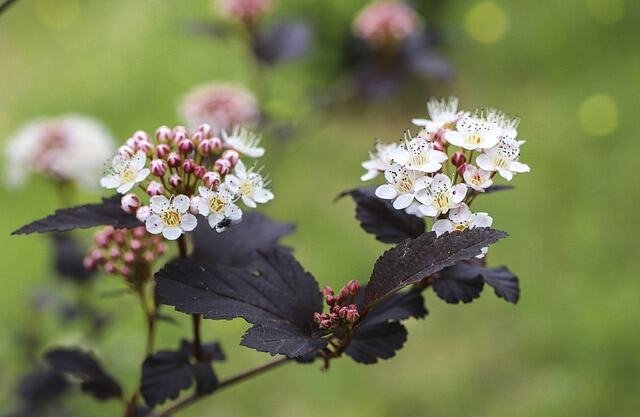
My first choice is Physocarpus, otherwise known as Ninebark. This one in particular is called Lady in Red, and it’s got these lovely dark leaves and very pretty pink flowers. One thing that perhaps puts people off shrubs is that you don’t get the instant impact sometimes that you get with perennials. I planted this about 18 months ago, and although I enjoyed the leaves, it didn’t really do very much in my garden last year. But this year, it’s thrown out these lovely pink flowers, and they’ve been going for several weeks. It needs very little care. You just simply prune it immediately after flowering so that you get the best flowers next year, or you can prune it really quite vigorously in winter. In fact, if you accidentally cut it down completely, it’ll bounce back. So, it’s a very accommodating plant. It’s got an RHS Award of Garden Merit, which is given to exceptional plants.
Sambucus Nigra

And in fact, my second shrub I discovered also has an RHS Award of Garden Merit. That is Sambucus Nigra Black Lace. Sambucus Nigra is the common elder, but this one, Black Lace, has got these lovely fine dark filigree leaves and very, very pretty flowers again. Once again, in late spring, early summer, this is a shrub that does best in sunny positions, but actually, it’s been very happy in this east-facing wall in my garden, which is partially shady, and it seems to be completely happy with almost complete neglect. I forgot to prune it for years, and it then got a bit big. It’s actually bigger than I am now, but we pruned it back really hard, and it bounced back. It can take quite rough treatment, and it’s not invasive in the UK and Northern Europe, but you might have to check if you’re in other parts of the world.
Nandina Domestica
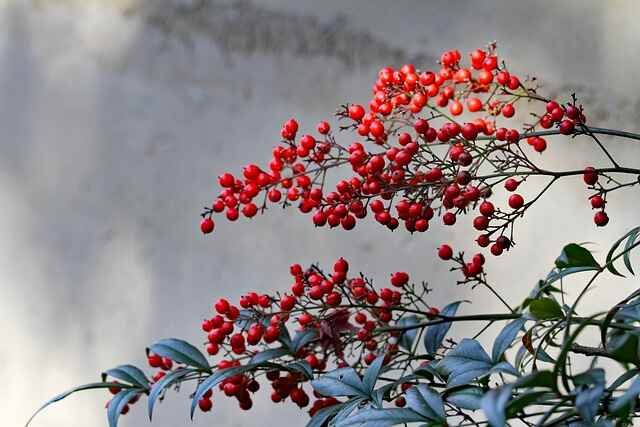
Nandina Domestica has many cultivars, and I have got a couple in my garden, one of which is called either Obsessed or Obsession – you’ll see both names around there – and the gorgeous thing about it is it has the most wonderful deep magenta fresh growth, which positively glows in the spring and the summer. And of course, it’s there all year round. It fades to a darker green, but it gives you a really good bit of structure. I use it as part of a screen between two small areas of my garden, and if I’m really lucky, I’ll get some very pretty panicles of white flowers on it, which then produce brilliant red berries in the winter and last all the way through to the following spring. Another cultivar of Nandina that I really love is a relatively new one called Nandina Lemon Lime. It’s a slightly smaller cultivar, but it has the most brilliant, as you could probably imagine, lemony-limey leaves, but it really brightens up a sort of shady spot in the garden. It doesn’t need full sun despite what other people will tell you. I have got it in a couple of places, and it just seems to thrive wherever it is.
Euonymus Alatus Compactus

Euonymus Alatus Compactus – I just love saying those three words; it sounds so you know what you’re talking about – is a brilliant, brilliant euonymus. It’s deciduous unlike many, and it has some very sort of corky bark, which looks stunning even in the winter. The foliage is really pretty. I like its almost nondescript flowers, but you don’t really grow it for that at all. What you do grow it for is its absolutely stunning autumn foliage. It goes almost day-glo pink in the right position. It’s a brilliant shrub. You can keep it pruned down to fit whatever space. I’ve got a tiny garden, and I’ve got two of them in my garden. I love them so much, they’re just a real treat, and also as cheap as chips to buy.
Mahonias

Mahonias are originally from North America, Central America, and Asia, so they are properly frost-hardy and frost-resistant – down to about minus 15 degrees Celsius, which is about 5 degrees Fahrenheit. They’re not too choosy when it comes to the soils that they grow in, the light levels they need, or their aspect. But they do like just that little bit of shelter, because they don’t like the harshness of being hit by cold winds. One of the most distinctive parts of mahonia are the leaves. As you can see, they’re really strong, thick, waxy, and spiny. This looks great at the back of a border. But I promised you more than just a big green blob of a shrub, and that’s where mahonia’s flowers and berries come in. Most mahonias have bright acid-yellow flowers, though you can find other ones with warmer tones and oranges. They flower in the autumn and into the winter. That strong yellow really does shine out during the winter when, let’s face it, colour can be somewhat limited. Then once the flowers pass, they’re replaced by berries that are a really gorgeous purply-black colour. The mahonia that I have, this one, is called Winter Sun. It’s probably the most commonly available, and it can grow as large as about three to five meters in height, which this is, and about three to four meters in spread. But don’t worry, there’s loads of choice. You can buy big ones, small ones, and even creeping ones. Looks aside, what I love about mahonia is just how easy it is to maintain. You can grow it into something really large like this – essentially a small tree – or you can keep it exactly the size and form that you want. And doing that really is so simple. It can be easily controlled through pruning, and it will take very severe pruning without having any problems.
Viburnum
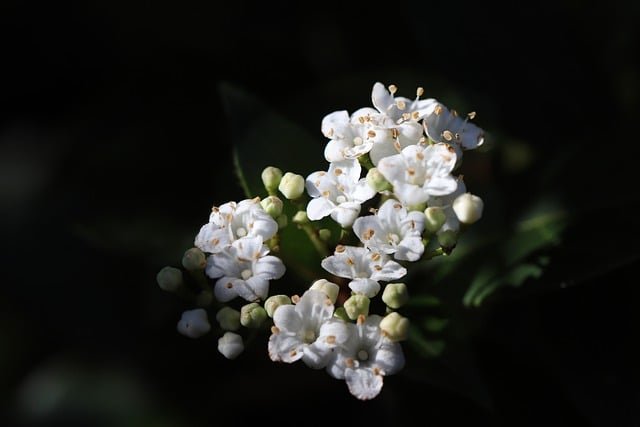
One of my favorite evergreen shrubs is the viburnum. Furthermore, some of them are deciduous. One of my favorites is Viburnum Plicatum f. Tomentosum Watanabe, which is a pretty name for the smallest of these. There are three of my favorites. This is an excellent, extremely small plant. It will just arrive at five or six feet in level. In the early summer, it blooms irregularly until the end of the spring. It can thrive in either full sun or partial shade, and if it grows too large for its location, it can be severely pruned back.
Choisya Ternata
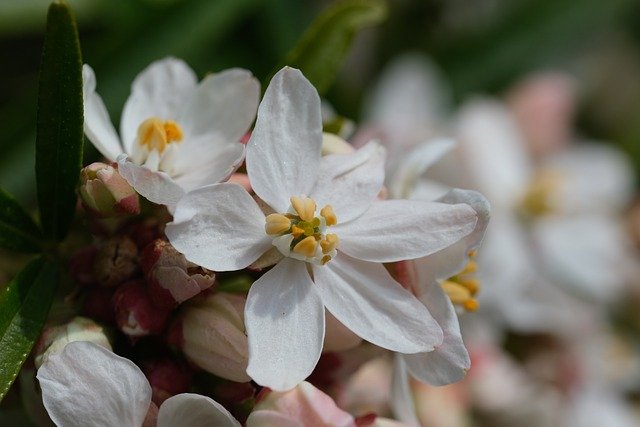
The two shrubs I’ve chosen to talk about today – which are not my favourite, but I’ve chosen them because I think they provide softness in the garden and blurring of the edges, which is very important. I think people look at shrubs and want an architectural style, but actually those shrubs which don’t have a particular shape are important too. So, I’ve chosen two shrubs which you may well see in old abandoned gardens because they struggle on – they’re real survivors – and I think this has given them a bad name. So, I’ve chosen Choisya Ternata, which has a glossy green leaf – a light green leaf – so it looks shiny and light in the winter rather than dark like a bay. It flowers twice a year with little white flowers. It will grow in shade, quite deep shade under laurels even, although you may sacrifice some of the flowers then. It needs very little pruning, except to keep it to the size and place you want it to be.
Weigela florida Variegata
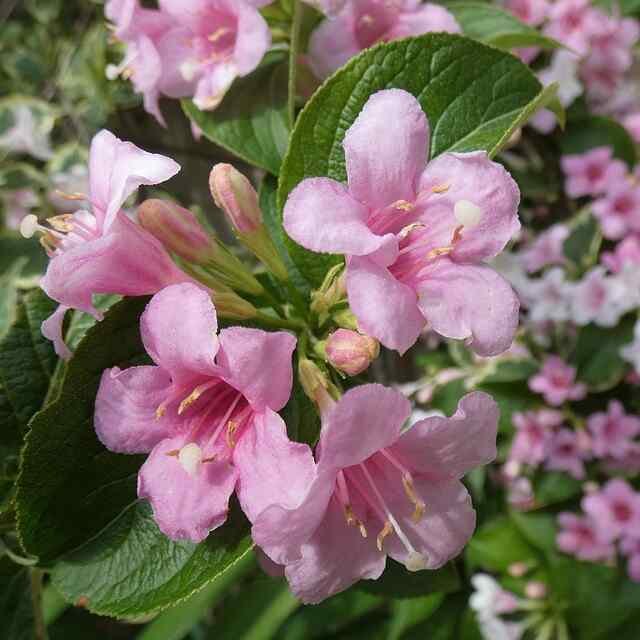
The other shrub I’ve chosen is Weigela florida Variegata, which has a lovely matte variegated leaf – not like the glossy variegated leaves of euonymus – and a pale pink flower. It’s very pretty in late spring or early summer. It’s very important with Weigela that you prune it properly. I can’t stress this enough because it is deciduous, and then in the winter, the leaves will fall off, and you will see the disaster of the pruning if you’ve done it wrong. So, after flowering, reach into the plant and cut older wood right down to the bottom. That will allow space and impetus for the new shoots to come up, and you will keep a lovely open frondy plant. Whatever you do, don’t cut it all the way around the outside like you’re pruning a box ball, because that will be a complete disaster.
Fatsia japonica
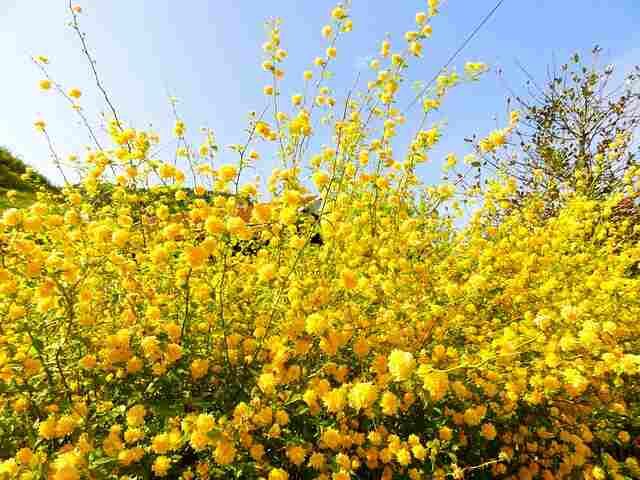
I also thought it would be interesting to ask a company that sells plants, “What shrubs people have been particularly asking for?” So, I asked plant and seed suppliers Thompson and Morgan whether there were any shrubs that really seem to be unexpectedly popular at the moment, and the shrub they came up with is actually one of my favourites. It’s Fatsia japonica Spiders Web. Fatsia japonica is just such a brilliant shrub because it grows very well in the shade, it’s got these incredible sculptural leaves, it’s really pretty hardy, and it just really will put up with endless neglect. Then it has flowers in the winter, just at the very end of autumn, beginning of winter, when the pollinators that are still up are really needing flowers.
Jane Moore is the author of Planting for Butterflies, Planting for Wildlife, and Planting for Birds, and she’s also the Head Gardener of the Bath Priory hotel. So, I asked her to tell us what we should be looking for when you’re choosing shrubs that will be particularly good to support your bird populations. There are so many brilliant shrubs that are great for birds, but all shrubs are good for birds. The obvious ones are things with berries – you know, things like Cotoneaster and ones with lots and lots of fruits – and they are the really easy choices to put in your garden because we quite enjoy seeing the fruits as well. But there are also lots of thickety shrubs that birds will really enjoy. So, things like hedges and densely growing shrubs, and a lot of the summer flowers like Philadelphus Mock Orange, and even things like Weigela, birds will really enjoy hopping about. They feel really safe in those shrubby thickets, and so they’ll hop about from shrub to shrub, using that shelter to keep them away from any nasty predators that might be lurking about. But there’re also lots of very ornamental shrubs that are brilliant for us in our gardens. Things like Cotinus are great for birds too because they’re really quite big growers, and lots of the flower heads and seed heads will really appeal to lots of smaller birds. And also just really common or garden shrubs – things like roses – are fantastic for lots of birds. Not only will small birds like blue tits feed off the aphids, which we all know roses get, but the larger birds will also use things like the rose hips later on in the season. One of my favourite roses for a slightly more natural garden, but it’s also extremely colourful, is Rosa glauca, which I think is really pretty. It has these lovely little pink flowers, this beautiful bluey foliage, and then later on some really attractive rose hips. And let me know what your favourite shrubs are, and thank you for reading. Happy Gardening!


